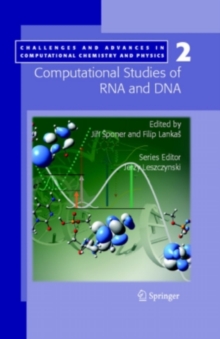
Solvation Effects on Molecules and Biomolecules : Computational Methods and Applications Paperback / softback
Edited by Sylvio Canuto
Part of the Challenges and Advances in Computational Chemistry and Physics series
Paperback / softback
Description
The incessant development of quantum chemistry since the appearance of the Schrodinger ¨ equation has turned this area into a respectable branch of science with unprecedented capabilities.
It is now a well-recognized eld of research with pred- tive power that is an important component in physical–chemical laboratories.
Very important developments were conducted in the early days by bright theoretical s- entists that were ready to absorb the incredible and unpredicted computer revolution which was only just beginning.
Isolated medium-size molecular systems can now be accurately studied theoretically by quantum chemical methods.
However, it was also long recognized that all biomolecular phenomena necessary to obtain and sustain living systems take place in solution, as well as the vast majority of chemical p- cesses.
Indeed solvent and liquid systems are germane in chemistry experiments.
In physics, aconstant concern isthedescription of theroleplayed by theenvironment in modifying the properties of the system as compared to the isolated situation.
Hence, the importance of studying atoms, molecules and biomolecules in the solvent en- ronment can hardly be denied.
The quantum chemical studies of molecular systems affected by the interaction with a solvent had its own turning point before the end of the 1970s, when some pioneering work was done, including the dielectric pr- erties of the medium in an effective nonlinear Hamiltonian.
This naturally led to the development of the so-called continuum models that are important and now popular.
Continuum models can be implemented from the simplest to the most sophisticated quantum chemical methods.
Information
-
Only a few left - usually despatched within 24 hours
- Format:Paperback / softback
- Pages:500 pages, 60 Illustrations, color; 100 Illustrations, black and white; IV, 500 p. 160 illus., 60 il
- Publisher:Springer
- Publication Date:28/10/2010
- Category:
- ISBN:9789048178261
£329.99
£276.15
Information
-
Only a few left - usually despatched within 24 hours
- Format:Paperback / softback
- Pages:500 pages, 60 Illustrations, color; 100 Illustrations, black and white; IV, 500 p. 160 illus., 60 il
- Publisher:Springer
- Publication Date:28/10/2010
- Category:
- ISBN:9789048178261










